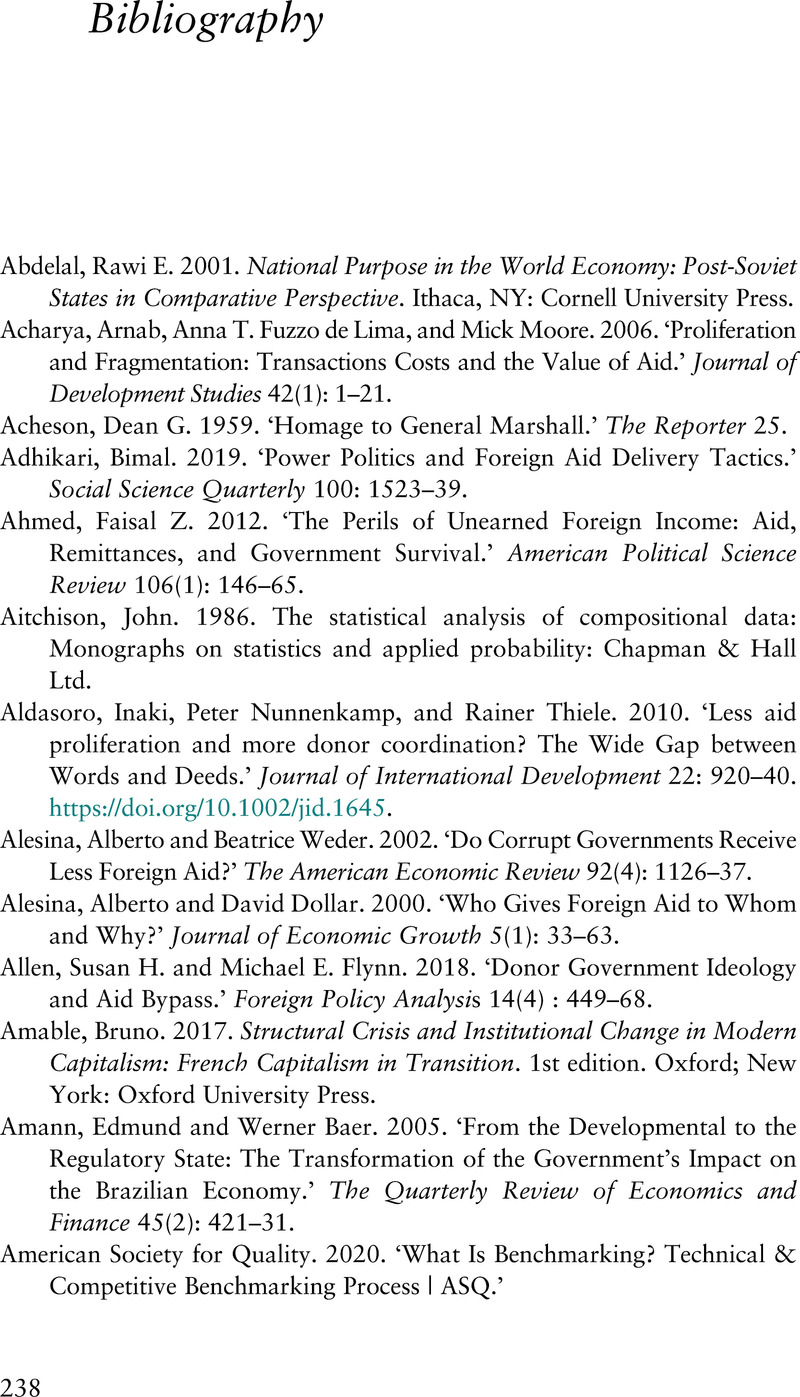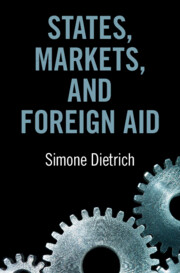Book contents
- States, Markets, and Foreign Aid
- States, Markets, and Foreign Aid
- Copyright page
- Dedication
- Contents
- Figures
- Tables
- Preface and Acknowledgements
- 1 Understanding Donor Pursuit of Foreign Aid Effectiveness
- 2 How National Structures Shape Foreign Aid Delivery
- 3 Examining the Causal Mechanism across Donors
- 4 Country-Level Evidence Linking Donor Political Economies to Variation in Aid Delivery
- 5 Testing the Argument with Evidence from Aid Officials from the United States, United Kingdom, Sweden, Germany, France, and Japan
- 6 Examining Public Opinion as an Alternative Explanation
- 7 Implications for Aid Effectiveness, Public Policy, and Future Research
- Bibliography
- Index
- References
Bibliography
Published online by Cambridge University Press: 29 October 2021
- States, Markets, and Foreign Aid
- States, Markets, and Foreign Aid
- Copyright page
- Dedication
- Contents
- Figures
- Tables
- Preface and Acknowledgements
- 1 Understanding Donor Pursuit of Foreign Aid Effectiveness
- 2 How National Structures Shape Foreign Aid Delivery
- 3 Examining the Causal Mechanism across Donors
- 4 Country-Level Evidence Linking Donor Political Economies to Variation in Aid Delivery
- 5 Testing the Argument with Evidence from Aid Officials from the United States, United Kingdom, Sweden, Germany, France, and Japan
- 6 Examining Public Opinion as an Alternative Explanation
- 7 Implications for Aid Effectiveness, Public Policy, and Future Research
- Bibliography
- Index
- References
Summary

- Type
- Chapter
- Information
- States, Markets, and Foreign Aid , pp. 238 - 268Publisher: Cambridge University PressPrint publication year: 2021



